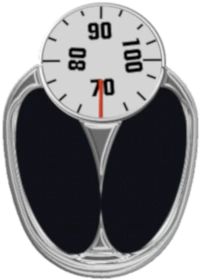What is Obesity?
 Obesity is defined as severe to very severe overweight that can cause lasting damage to health. Obesity is a chronic disease associated with a reduced quality of life and a high risk of secondary diseases. These include cardiovascular disease.
Obesity is defined as severe to very severe overweight that can cause lasting damage to health. Obesity is a chronic disease associated with a reduced quality of life and a high risk of secondary diseases. These include cardiovascular disease.
Obesity is not an aesthetic problem of people with weak character, but it is a known disease. It is one of the a hormonal nutritional and metabolic diseases.
People are overweight or obese when they consume more calories than their body needs in the long term (positive energy balance). However, overweight and especially obesity are not just beauty problems. People who are too fat are (on average) more likely to develop diabetes or cardiovascular diseases.
According to the WHO classification, a person is overweight from a Body Mass Index (BMI) of 25. A BMI of 30 or higher is considered to be obesity.
Calorie intake and exercise are the two Adjustment screws that can influence your weight.
You gain weight as soon as your calorie intake from food is greater than your calorie requirement (positive energy balance). Conversely, this also means that you lose weight as soon as your calorie intake is lower than your calorie requirement (negative energy balance).
Fat distribution – Apple type or Pear type
Obesity is primarily characterized by an excessive accumulation of fat deposits. The health risk depends not only on how much fat is stored, but also on where the fat is stored. Fat deposits in the abdomen (Apple typePear type).
The so-called apple type is more typical for men, while the pear type is more typical for women. The pear type is less harmful to health than the apple type.